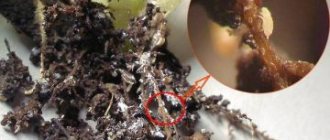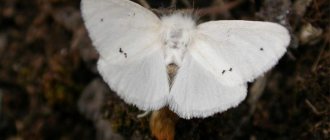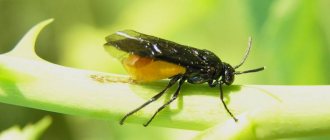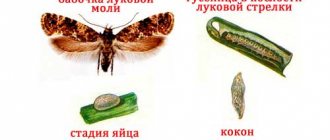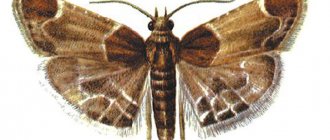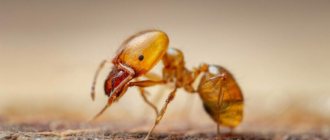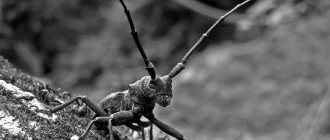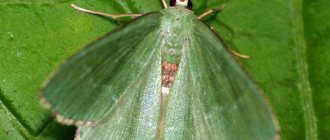- Wild animals
- >>
- Insects
Pied butterflies are a large family of motley butterflies, including over a thousand species and distributed throughout the planet except for permafrost lands. The moth butterfly has a calm character, even their flight itself seems sleepy and lazy - they are poisonous and have almost no fear of predators. They often become garden pests.
Origin of the species and description
Photo: Pied Butterfly
The first butterflies appeared about 140 million years ago - there are well-preserved fossils found in amber, so their appearance is reliably established. Unfortunately, fossilized remains of butterflies are relatively rare to find because their bodies are delicate and poorly preserved.
Therefore, scientists believe that butterflies may actually be older than the oldest fossils found, and it is likely that they appeared 200-250 million years ago. Their flourishing is associated with flowering plants - as they spread across the planet, butterflies became more and more numerous.
Flowers became the main source of food, and to obtain nectar, butterflies acquired a proboscis and beautiful wings to resemble flowers. The first to appear were the nocturnal (even-whiskered) butterflies, and only then the diurnal (even-whiskered) butterflies appeared. The division into diurnal and nocturnal is quite arbitrary - for example, the moth is a nocturnal moth, but most of its species lead a diurnal lifestyle.
Video: Butterfly
Therefore, the key parameter is still the mustache. Variegated butterflies appeared first, and for the most part they are smaller and more primitive in structure. This partly applies to the moth - it has rather simple wings, which is why it flies slowly and clumsily, but still surpasses almost any moth in both size and complexity of its structure.
This suggests that pied moths originated relatively recently, although the details of their origin are unknown to researchers: this is due to the small number of finds of fossil butterflies. As for the moths themselves, this is a large family that includes over 1,000 species, and new ones are still being discovered periodically.
Its scientific description was made by Pierre Andre Latreille in 1809, at which time the name was given in Latin - Zygaenidae. The genera and species included in the family are very diverse, so that it is sometimes difficult to understand, just by looking at butterflies of different species, that they are closely related.
Appearance and features
Photo: Poisonous moth butterfly
The body relative to the wings of most members of the family is large, as a result of which they look far from being as fragile and graceful as other butterflies. It affects the fact that they belong to different-winged butterflies, which differ in structure from the usual daytime butterflies. The body is also studded with bristles.
The wingspan varies significantly depending on the species, ranging from 15 to 60 mm - thus, pests belong to small or medium-sized butterflies. They can have a proboscis either well developed or greatly reduced. There are no scales on it. The palps, both maxillary and labial, are short in pests.
The antennae can be different, in any case they thicken towards the end, that is, they are club-shaped. Pelts also have chitozema - these are bristles located on the head, playing the role of a sensory organ.
Most of the representatives of the family are distinguished by their very bright colors that catch the eye - this is even reflected in the name. The main color of the wings is usually black, blue or green, and they are often dotted with spots - yellow, orange or red. It is rare to find moths that are monochromatic or close to this, as well as simply pale ones.
They have bright colors for a reason; this is a signal to predators that the butterfly is dangerous for them - the fact is that pests are poisonous, toxins accumulate in their bodies, especially hydrocyanic acid. Many predators who eat the pest will be poisoned - in the best case, they will have to suffer a lot, even death is possible.
This butterfly also has another method of defense: if it is disturbed, it can secrete an odorous liquid containing poison. Not only adult butterflies are poisonous, but caterpillars too.
Where does the moth butterfly live?
Photo: Pied butterfly in Russia
Representatives of the family are distributed almost throughout the entire planet except for the coldest corners, where butterflies simply cannot live. Of course, different species have their own habitats; the following main zones of distribution of subfamilies are distinguished:
- Zygaeninae live throughout almost all of Europe and Asia, as well as in northeastern Africa;
- Chalcosiinae prefer the southeast of Asia; outside it they can also be found, but relatively rarely and only a few species;
- Procridinae are found almost everywhere, although with unequal frequency - the largest number of species, as well as the populations of the butterflies themselves, live in the tropics;
- Phaudinae, as well as Callizygaeninae, are relatively rare subfamilies and include a small number of species; they can only be found in the Indian region and Southeast Asia.
In general, moths love warm climates and are most common in the tropics and subtropics. The temperate climate is much poorer in these butterflies, but it also has its own unique species. Pied moths also prefer moist air, which is why there are much more of them in the zone adjacent to the sea within 1,000 kilometers from the coast than in the interior of the continent.
They settle in places rich in vegetation, where it is convenient for them to feed themselves and lay eggs, that is, flowers and food plants grow close to each other. Often this is a meadow or garden - they are known as garden pests, because they live in large groups and can literally eat some plants.
Varieties
Volyankas include:
- willow grass;
- heather brushtail;
- reed grass;
- antique brushtail;
- bashful fur-footed;
- Volyanka el black;
- gypsy moth;
- dark wave;
- goldentail;
- yellowtail;
- coniferous woolfoot;
- Volyanka dissimilar, etc.
Willow
Distributed everywhere - from Europe to southeast Siberia and east Asia. At the beginning of the last century it was brought to North America. Large outbreaks of mass reproduction are periodically observed.
This beautiful snow-white butterfly with silky shiny wings, during mass reproduction, is capable of completely denuding poplar and willow plantings in the spring. The wingspan is from 30 to 40 mm. The chest and belly are white. The eyes are black, the legs are striped, black and white. The antennae of the female are short-combed, while those of the male are bilaterally combed.
The caterpillar grows up to 45 mm long. Each segment of the body is decorated on top with a white spot and six brown-red warts studded with hairs. Two more black warts are located on the fourth and fifth segments. The size of the pupa covered with golden hairs is from 13 to 22 mm. Color – black-brown. At the strongly narrowed end of the abdomen there are hooks.
The emergence of willow grass occurs in June-July. The butterfly is active in the evening. Females lay two hundred eggs on the bark of willows and poplars and cover them with foam, which dries quickly. After two weeks, the caterpillars hatch from the eggs and begin to skeletonize the leaves. As they grow older, their appetite increases. The caterpillars overwinter separately in cracks in the bark, entangling themselves in a web. They return to active life in April next year. They pupate in June-July. The insect remains in the pupal stage for about 10 days. In the south there is double generation. Under unfavorable conditions, the eggs overwinter, and the caterpillars appear only the next year.
Antique (common brushtail)
Habitat: Europe and Asia. In Russia - in the European part, in Siberia, the Urals, the Amur region, Southern Primorye, and the Caucasus.
The male's wings are rusty-brown in color, with one white spot on the front wings. Swing – up to 30 mm. The female is wingless. The gray caterpillar is covered with red hairy warts. At the posterior end of the body, the hairs are collected in a black brush (hence another name for the butterfly - the antique brushtail). The caterpillar feeds on oak, birch, and larch needles. May harm ornamental trees. In warm weather, in well-warmed, thinned forests, outbreaks of mass reproduction of the butterfly are possible, lasting up to 7 years.
The female lays up to 360 eggs on her cocoon, which easily overwinter even at forty-degree frosts. In spring, when temperatures change, they often die. Generation: in Siberia - annual with emergence in August-September, in the European part - double, emergence in July-August and September.
gloomy
Habitat: south of Primorsky Krai, Japan, Northeast China. It settles in pine, oak and apricot forests on limestone rocks in places where hard juniper grows, which is the only food for the caterpillar. The wingspan of the male is about 25 mm, that of the female is about 30 mm. The front wings are brownish-gray with a faint pattern in the form of two black strokes at the base of the wing and a wavy band along the edge. The hind wings are slightly lighter than the front wings, the same color as the belly. The chest and head are dark gray. Butterflies are active in the second half of summer. They can be found at dusk near juniper trees. The life cycle of the gloomy moth has not been studied. The species is listed in the Red Book of Russia.
Unlike
Habitat in Russia is exclusively Primorsky Krai. Also lives in China, Japan, and the Korean Peninsula. The butterfly can be found on mountain slopes in mixed coniferous and black fir forests.
deciduous forests. Males and females are very different from each other. The wingspan of males reaches 46 mm, in females - 55 mm. The color of the male's wings is velvety black. There is an oblique white stripe on the front wing. The female's wings are elongated. The black front ones have three wide white veins in the form of a fork. Another vein is located at the base of the wing. On the hind orange-yellow wings there is one blurry black spot.
Females are active at night, males fly during the day. Summer begins in July-August. The eggs overwinter. The caterpillars emerge from the eggs by the end of June. They feed on Manchurian hazel and heartleaf hornbeam. On the same trees, the caterpillars pupate for 10–12 days. The dissimilar moth is a rare butterfly that is endangered and is therefore listed in the Red Book of Russia.
What does the moth butterfly eat?
Photo: Spotted butterfly from the Red Book
Adult butterflies consume mainly nectar and do not cause any harm. Preferences can vary greatly depending on the species, but in temperate latitudes it is usually meadow and garden flowers.
Such as:
- clover;
- bell;
- dandelion;
- aster;
- narcissus;
- cornflower;
- gentian;
- blooming Sally;
- crocus;
- buttercup.
Some moths may also drink the sap of trees or rotting fruit. In any case, in the form of imagoes they do not interfere with people in any way, the only problem is the caterpillars - it is because of them that if such butterflies appear in the garden, they must be urgently exterminated. There can be a lot of caterpillars, and they often feed on the leaves and buds of garden trees and bushes.
The following may be subject to their attacks:
- grape;
- plum;
- pear;
- cherry;
- Apple tree;
- sorrel;
- peas;
- legumes
These butterflies do not fly far, and if they have already appeared in your garden, a whole population of them may soon emerge, and the trees will not be able to survive from the caterpillars - there may be several hundred of them on one, which will greatly reduce its fertility.
Interesting fact: The body of many moths is covered with hairs to scatter the signal of bats - with its help they find insects and then catch them, but catching moths is not so easy. Some also have ears that are sensitive to ultrasound and, hearing that a bat is nearby, the butterfly falls to the ground and avoids meeting it. There are even some that emit a response signal, confusing the bat.
How to deal with a pest
In gardens, it is necessary to regularly inspect fruit trees and berry bushes. Any discovered clutch of eggs must be scraped off and burned or buried to a depth of at least half a meter. Oviposition on the bark of old trees can be treated with a mixture of kerosene and mineral oil.
During the growing season, treat fruit crops with Virin-KSh and Virin-ENZh. Their active principle is viruses that harm the parasites, but are not toxic to humans and animals. The action of "Virin-KSh" is directed against silkworm caterpillars. One treatment is carried out at a rate of 200 ml per hectare. The drug "Virin-ENZh" is used to treat egg clutches at the rate of 0.02 ml per clutch.
Before bud break, trees can be treated with nitrafen or oleocuprite. Before flowering, trees are sprayed with insecticides: nexion, chlorophos, dursban, gardon, metathion, antio and others.
The hatched caterpillars are collected and destroyed. In the early stages of their development, treatment with the pesticide Bacillus thuringiensis, which is most active at an air temperature of 18–30 degrees, is effective.
To catch caterpillars, traps in the form of special adhesive rings are used, which are attached to the trunk and branches of trees. You can make a trap from a piece of burlap, which is wrapped around a tree trunk one and a half meters from the ground and secured with rope. The upper part of the fabric is folded over the rope. Caterpillars are collected daily.
It is very important to wear gloves to prevent skin contact with the poisonous hairs of the caterpillars. You can also collect and destroy insects in the pupal stage, when they pupate en masse, in large colonies, entangling themselves with threads
You can also collect and destroy insects in the pupal stage, when they pupate en masse, in large colonies, entangling themselves with threads.
Entomophages are involved in the fight - predatory insects (certain types of beetles and wasps), birds. For example, in relation to the ancient mothwort, the most active egg eater is from the genus Telenomus. Folk remedies include substances that repel pests, such as tobacco infusion, nightshade tops, and ash.
When butterflies emerge en masse, it is useless to fight them. During such outbreaks, in order to prevent the further spread of parasites, they even resorted to burning forests.
Features of character and lifestyle
Photo: Pied Butterfly
Most moths fly actively during the day and rest at night. Although there are exceptions - some species fly at night, like other moths, they tend to fly towards lanterns and into illuminated windows. Most often, moths love sunlight and warmth; they can often be seen basking in the rays, with their wings folded.
The design of their wings is quite primitive - this is due to the fact that they are not usually hunted in the air, and therefore pied moths did not have as many incentives to improve their wings as most other butterflies. As a result, they fly very slowly and their flight looks clumsy.
A caught moth may pretend to be dead. The level of fearfulness varies depending on the species - some pieds, until obvious aggression is shown towards them, are generally calm, allow people to freely take control of themselves and do not even try to fly away.
Such a calm character was largely developed due to the fact that they are threatened by quite a few dangers, and there is no need to be afraid of every rustle - an ordinary butterfly cannot afford such calmness, because every minute, even right in flight, birds can hunt for it .
The life of pests is calm and measured: when the sun comes out, they fly out to feed on flowering plants, slowly flying from one to another, usually close to other pests, in whole groups. In general, they are not inclined to move far and can spend their entire lives in one garden or in one meadow.
NETTLE LOVERS
After 7-10 days, black caterpillars with light specks and spines emerge. The larvae of the moth wing are monophagous. They feed only on two types of nettles: stinging and stinging nettles. At first the caterpillars live in groups, but after the fourth molt they disperse. 5-8 individuals can feed on one plant. If they are startled, they fall to the ground.
Females are known to lay eggs on the emerging flower heads of the cowvetch plant. The timing is such that when the larvae appear, they can attack the newly opened flowers. These butterflies reproduce only once. Silver-blue butterflies are found in open woodlands, flowering meadows, roadsides, and sometimes in small waste areas in urban centers. It is abundant in areas that are near larval plants, as the adults also feed on the nectar of these plants.
In Canada, the Silver Blue is one of the most abundant butterflies and is found in every province and territory except southwestern Ontario, where it is relatively rare. Common and well distributed throughout England, Wales and Ireland, Isle of Man and Channel Islands. More restricted to predominantly coastal habitats in northern England and Scotland. Habitat: Frequently found in open grassy habitats including soil, railway banks, gardens and woodland attractions, but perhaps most commonly found in well-drained rabbitgrass grasslands, mature sand dunes and heathland.
A month later, the caterpillars pupate on nettles or in some kind of shelter, attaching to it with the tip of their abdomen. The pupa is dark brown, with dark spots at the wing buds. Soon the second generation butterflies emerge. But sometimes the pupae of spring moths remain overwintering together with the offspring of the summer form. However, in April, red butterflies still emerge from them.
Description: Medium sized black moth, red markings in foreground, rear edges mostly red. Often found near common ragworts, although occasionally on other disturbances and shellfish. This species is so named because of the color of the hind wings and the markings on the front wings, which make it unmistakable. In rare cases, the pinkish markings are replaced by yellow, or the front is red with a black border, or the wings are completely black. Easily disturbed during the day and flies into the sun.
Red soldier beetle - Ragonycha fulva
Description: A medium-sized black moth with six red, sometimes yellow, spots. In addition, some rooms also had Soldier Bugs. The red and black coloring reminded people of the red coats of British soldiers, hence the common name. It is also known as "Bloodsucker" for its bright red appearance, but it is harmless to humans.
To attract attention to endangered and rare species, an action is being held: a butterfly is announced - the symbol of the year. In 2007, it became the Variable Piedwing.
Social structure and reproduction
Photo: Pair of pied butterflies
Eggs are laid in the spring. The masonry can be either single or in rows. The eggs are about half a millimeter in size, they are elongated and yellow in color. It takes the caterpillar about a week and a half to hatch.
She has a kind of protection - she can pull her head into her chest. Her entire body is also protected: it is covered with bristles. But much more important is that it is poisonous, which is why rare predators risk attacking it; most know very well that it is inedible.
Having properly eaten and grown, the caterpillar goes to “winter.” This can be called this very conditionally, because wintering for them can begin in July, if these are caterpillars of the first generation, the earliest, or in August for subsequent generations. This is in temperate latitudes; in the tropics, new generations appear all year round.
They spend a lot of time hibernating until the next warm period. Then they wake up and again begin to devour leaves or buds, because it takes a lot of energy to turn into a butterfly. Having accumulated enough reserves, they finally pupate and then develop into adults.
Thus, more than a year passes from laying an egg to becoming an adult. The butterfly usually does not fly far, and reproduces in the same garden where it appeared - as a result, if measures are not taken against them in time, within a year the garden may be literally filled with them, which will not benefit its fertility at all.
What harm does it cause?
In the spring, when warm weather sets in, the caterpillars that have gone to winter wake up. To gain the nutrients necessary for further transformation into pupa and imago, they often attack gardens. Caterpillars gnaw the buds of fruit and berry crops, during their swelling and blossoming, and young leaves. All this leads to a decrease in yield and deterioration in plant health. Caterpillars that appear in summer also eat leaves.
Relatives of the family, moth moths, cause great damage to apple and pear trees.
Since moths do not fly long distances, the garden infestation center spreads on a grand scale. If measures are not taken, the number of caterpillars next year will be several, or even tens of times greater.
Natural enemies of moths
Photo: Pied butterfly in nature
Due to the poisonous nature of the pest, the pest has relatively few enemies, both in the form of a caterpillar and after transformation into an adult. Most predators are repelled by its color or the smell of the substance that it releases when it is in danger - both of which indicate inedibility.
But still, some predators can digest such butterflies and hunt them. The list of enemies of the pest can vary greatly depending on what species it belongs to, but most often it includes:
- ground beetles;
- coccinellides;
- spiders;
- predatory bugs;
- syrphid fly larvae.
Those listed above are not afraid of the poison of the moth, but they most often hunt for its eggs and caterpillars, and the imago can feel safe - only large tropical spiders can threaten it.
An important enemy of pied moths, most likely even the worst, is people. Due to the fact that pests are garden pests, and very malicious ones, they are purposefully fought with the help of chemicals, which destroys large numbers of them, and sometimes even entire populations.
Interesting fact: There are also false pests - it is very easy to confuse the real ones with them due to their external resemblance. Moreover, they belong to different families - the false pestle belongs to the Erebidae, but leads the same way of life as the real pestle, and can even be found in the same fields. There are a lot of species of false pestle - about 3,000.
Measures to control armyworm pests
How to fight cutworm butterflies using agrotechnical methods, biological and chemical means?
Agrotechnical methods. Compliance with quarantine measures helps prevent new species of lepidoptera from entering greenhouses. The arrival of native butterfly species can be controlled using light traps and pheromones. Caterpillars are mainly controlled through integrated control, combining biological methods with the use of selective pesticides or other methods.
Biological agents. Bacterial preparations based on Bacillus thuringiensis are most effective against young free-living caterpillars. For example, Macrolophus, are not specialized predators, however, they help fight them. The bug sucks the contents of eggs laid by butterflies and young caterpillars. This, with a high number of predators, makes it possible to refuse treatment with pesticides. In the fight against caterpillars, predatory insects specially bred for this purpose can be used: Podisus maculiventris and Picromerus bidens L.
Chemicals. Preparations based on deltamethrin (Biorin and Fas), which have a rapid and very toxic effect, are recommended. Due to the large difference in the time when caterpillars hatch from eggs, plants should be treated at intervals of 5-7 days in 3-4 times. The use of modern drugs from the group of neonicotinoids (Aktara, Konfidor), which have a systemic and translaminar effect, facilitates the fight against pests that feed on plants at night and inside fruits. To prevent the emergence of resistance, it is advisable to alternate treatments (organophosphorus or microbiological preparations).
Using such measures to combat cutworms, it is necessary to dust the soil surface (along the rows and under the plants) with 12% hexachlorane powder. In autumn, the area intended for planting must be treated with hexachlorane. This anti-owl preparation is evenly dispersed on the soil surface, then embedded to a depth of 20–25 cm. The consumption rates of 25% hexachlorane powder on phosphate rock per one hundred square meters are as follows: for light soils – 350–500 g, for medium soils – 500–1250 g, for chernozem, heavy loamy soils - 1250–1500 g. When using 12% powder, the consumption rate should be doubled.
Population and species status
Photo: Pied butterfly in Russia
In general, nothing threatens pied moths as a family - they reproduce rapidly, and where a couple of butterflies live, a few years later there may be a thousand. Even fighting them does not always help to completely get rid of these pests, but often only reduces their population to acceptable levels.
Thus, due to rapid reproduction, these butterflies are very tenacious. But there is another nuance - they do not spread evenly over a large area, but live in pockets, very densely. As a result, the complete destruction of several such foci can greatly reduce the range of the species, and if it was not widespread, then put it at risk.
Therefore, although many pests are much more widespread than people would like, and there are a lot of them, there are also rare species that are on the verge of extinction and are protected in certain countries or regions.
Interesting fact: There are about 18 thousand species of butterflies, also known as diurnal butterflies. This may seem like a lot, but there are many more different species - about 150 thousand species. Most often, moths are small in size and have a primitive structure, but the species diversity among them is amazing.
So, along with very small moths, these include Saturnia pear and Death's head hawk moth - their wingspan can exceed 150 mm. There are much more moths not only in the number of species, but also simply in quantity, and at night a simply huge number of lepidopterans lead their lives.
Cabbage is a dangerous pest of cabbage heads
Pieris brassicae, wingspan – 45-63 mm
Cabbage grass, or cabbage white, is familiar to every summer resident. You can find it in beds with cabbage, turnips, turnips and other cruciferous crops. The butterfly is fussily looking for a place to lay eggs, from which yellow-green caterpillars will soon appear. During the season, one individual lays up to 300 eggs!
Unprepossessing in appearance, the white hare terrifies with its appearance. You should especially be wary of females, the main difference of which is the black spots on the upper wings.
The voracious caterpillars of the white butterfly eat the leaves and prevent the head of cabbage from forming. After a while, only the veins remain from the leaf. When the food runs out, the pests crawl to new plantings.
How to deal with cabbage and its caterpillars. Safe methods include hand-picking caterpillars and catching butterflies. You can also plant marigolds, marigolds, mint or sage between the rows, which will repel pests. A good way is to cover the cabbage with a mosquito net and agro-canvas so that butterflies cannot lay eggs. Folk remedies will help by spraying 2 tbsp. mustard and 1 tsp. ground red pepper per 10 liters of water. And if there are a lot of insects, use Fitoverm, Karbofos, Actellik or another insecticide.
